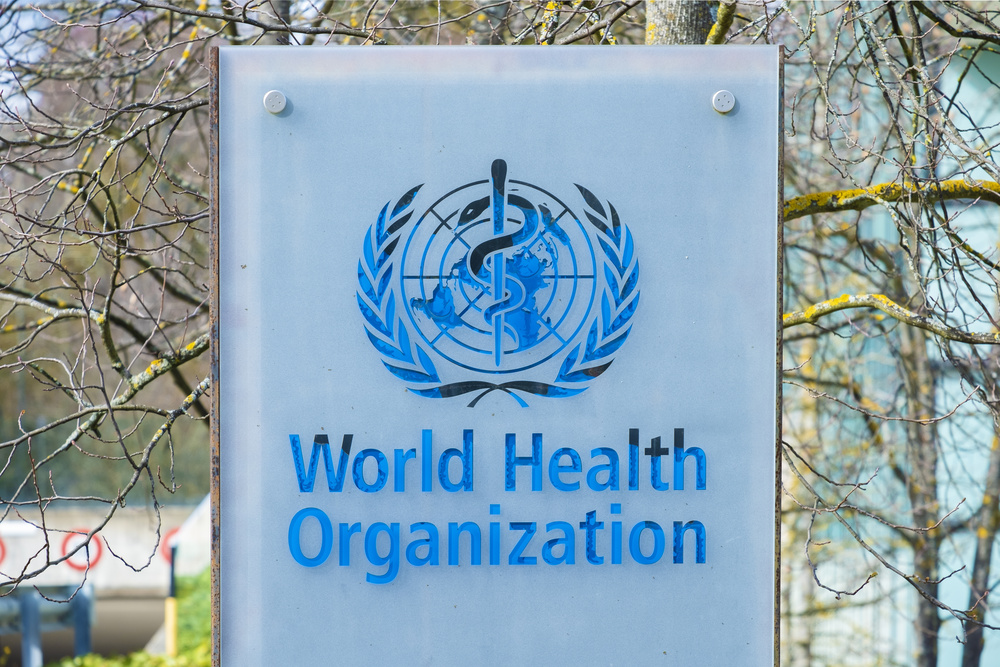The publishing of the World Health Organisation (WHO)’s new guidelines on mental health at work, in September, marked a seminal moment because they make clear, beyond doubt, of the indisputable link between mental health and work.
They also make clear that, currently, companies whose wellbeing efforts have focused predominantly on the individual – rather than looking at the whole culture and the modus operandi – are not doing enough. They serve as a call to action to the global business community to do more to ensure that work enhances, rather than damages, people’s mental health, with much evidence-based guidance on how to do this.
While the guidelines are not legal requirements they will certainly help companies to fulfil their legal obligations, as set out by the HSE and other national regulating bodies across the globe.
Jo Yarker’s company – Affinity Health at Work, where she is a Managing Partner- was invited to do some research to underpin the guidelines, so we caught up with her to highlight the most important points for employers to be aware of.
Is there anything that struck you as different about these new WHO guidelines compared to what has come before?
One thing that makes them quite different to other guidelines that employers will be familiar with is that they take account of what is important for workers across the globe. When we look through a UK lens, like the Thrive At Work standards, they are very much about what is important from a first world organisation viewpoint. The WHO is an international body, and these guidelines are developed for organisations across the world, considering not only what is important in developed countries but also in the developing world, which is obviously very relevant if you’re a global company.
Another thing that is interesting about this guidance is that it is encouraging us to move beyond awareness and beyond the individual experience of mental health. It places a firm emphasis on the contextual factors, those things in the organisation that we can practically change and attend to in order to make work better for people, who have mental health concerns but also to protect the workforce generally by promoting good mental health practices.
So, would it be fair to say that there’s a shift in responsibility from purely on the individual to the employer?
Yes and no. There has always been a responsibility for the employer to protect and promote mental health in the same way that they have a responsibility for physical health. These guidelines place a focus on psychosocial risks at work. Traditionally, when we think about mental health it’s been about the experience of the individual and how employers can support them to manage their own mental health. This is a shift from that to looking at the psychosocial risks in the work environment, how does work need to be designed and manged to protect and promote mental heatlh.
The key thing here is the need to think about and identify psychosocial risk, identifying the challenges and addressing these risks through job redesign and consultation. It pivots our understanding from mental health interventions, for example, being ‘here’s a digital app to help you with your mental health’ to intervention being about talking together about how we work better and differently.
This is a very important shift because, no matter how much support we have as an individual, if our work is designed badly – if we have limited control over our work, or the.pace of change is not manageable – we’re not going to be able to improve our mental health. And, even if we have strategies to think differently, if we have toxic relationships or unmanageable workloads, we’re still going to suffer.
What are psychosocial risks?
They are our psychological and social risk factors in the workplace. They arise when our work is designed and managed badly. Broadly these refer to our job demands, the control we have over our work, work relationships, the way change is managed, and so on. The guidelines really put a sharp focus on psychosocial risk factors and what organisations should have in place, such as monitoring of risks and line manager training .
How easy is it to measure psychosocial risk?
It is much easier than it sounds, but we just have to ask the right questions. So, rather than asking people how they’re feeling, we want to be asking employees about specific aspects of their job and its demands. For instance, you’d want to know things like is their workload manageable, how often are they working over hours, do they have the right technology to do the job that is expected of them. Or does their line manager take accountability, do they distribute work fairly.
You could use a general framework – like the HSE Management Standards – or, what we do at Affinity, is we use a bespoke approach. We do this because if we ask people about specific psychosocial risks in their environment, we’re can target our action and our solutions much more quickly and in a more focused way.
I know it’s a big question, but do you think you can sum up the key points for employers to take note of in these new guidelines?
The guidance is set around six key areas of recommendations: for organisational interventions, for training managers, for training workers, for individual interventions, for returning to work after absence associated with mental health conditions and for gaining employment for people living with mental health conditions. The easiest way to pull out highlights would be to take each area one at a time.
Recommendations:
-
for organisational interventions
We’ve touched on this already – it’s shifting from the concept of wellbeing being how someone feels, to the recognising the importance of psychosocial factors – the source of stress. It’s saying that if we have organisational interventions that target the source of the problem, we’ll be much better able to prevent harm and reduce the impact of work on our employees mental health.
-
for training managers
What we need to be doing with managers is not just raising their awareness of signs and signals, but helping them understand what behaviours protect and promote good mental health. They need to know what mental health is and then change their behaviours so they protect the mental health of their team.
That might look like taking accountability and being responsible for the team dynamics. Or making sure managers are open and approachable, or taking an individual approach to managing their team.
Most managers will be doing a lot of these things already but what they don’t often do is do them consistently. Companies need to encourage managers to constantly have mental health on their radar and, if they have a team member doing through a period of struggle, they need to double down on these protective behaviours.
If we only raise awareness of signs and signals of mental ill health and don’t do anything else, that’s almost worse because we’ve made managers aware of what to look for, and encouraged employees to speak out, but we have not offered a solution – we need to equip managers with the knowledge, skills and confidence to take action.
-
For training workers
We always advocate whole organisation training, so there is a shared understanding or a shared language, as well as additional line manager training. This means managers know how to look after themselves and can role model that behaviour but this also acknowledges that looking after a team requires different skills and managers have a role to play in supporting their teams’ mental health.
Training workers generally comes back to this point about mental health literacy within the company so everyone is talking about and aware of the signs and signals. It’s being able to, as individuals, answer questions like: are we aware of how our mental health affects the way we think and behave? Do we know how to look after ourselves? Do we know what healthy habits are? But also, do we know what to look out for in the way we work, can we make adjustments to the way we work to prevent or reduce the psychosocial risks.
This also involves addressing stigma which is still absolutely out there. Working in wellbeing we can be in a bubble where we can think everyone understands what mental health is – they don’t, we still have a long way to go.
-
for individual interventions
This is about what an employer provides for individuals, in terms of knowledge, skills or tools, to cope when they’re under stress. This is where the digital apps, mindfulness, cognitive behavioural therapy etc come in.
Most employers, when thinking about getting mental health activity going, put these individual level interventions in place. These are vital. But these guidelines make clear that the WHO thinks that organisations need to have a much broader focus beyond the individual level provision. Many organisations currently have a narrow focus but can use this as a spring board for developing a more comprehensive and integrated offer .
-
for returning to work after absence associated with mental health conditions
This is important because often when people return to work we give them access to counselling or cognitive behavioural therapy, which helps them with their thinking strategies and coping style, but doesn’t help them reintegrate into work, or access more flexible/different work when they come back. Our research has consistently shown that no matter how much an employee works on themselves, they need thier colleagues, their line manager, their organisations’ policies and practices to support them if they are to return to, stay in and thrive at work.
-
for gaining employment for people living with mental health conditions
This recommendation requires us to think about how our recruitment policies and practices are inclusive and that work is flexible. Flexibility is key if we want to enable people with mental health conditions to work. If we allow people to work part time, from home or in ways that allow them to balance their health and work, for example through taking short regular breaks, or adjusting work tasks, we are going to provide opportunities for many more people with mental health problems to retain work – and we would then have many more people in the workforce. This is not only a compassionate way to organise work. Now more than ever, with many sectors experiencing a labour shortage, there is a strong business case for a flexible first approach.
And finally, in your opinion, how close are companies generally to adhering to these guidelines?
There’s a great sense of movement at the moment. Employers are all at different stages of their journey and driven by different things. Some employers joined the journey early because they want to do good and they’ve got the moral argument driving them, some have responded to the business case as we know absence and performance losses cost a lot of money, while others respond to standards like the HSE’s and guidelines. I think with these WHO guidelines, and other frameworks such as the ISO 45003 for psychological health and safety, the HSE’s renewed focus on stress at work, will all help accelerate momentum behind this movement.
This is a real opportunity for organisations to pause and take stock of where they are. These new guidelines shine a light on the importance of moving beyond individual level support. I would encourage organisations to use the guidance to reflect on whether their current offer goes far enough – adhering to the guidance will ensure that organisations are not only supporting, but also preventing and protecting mental health at work.

















